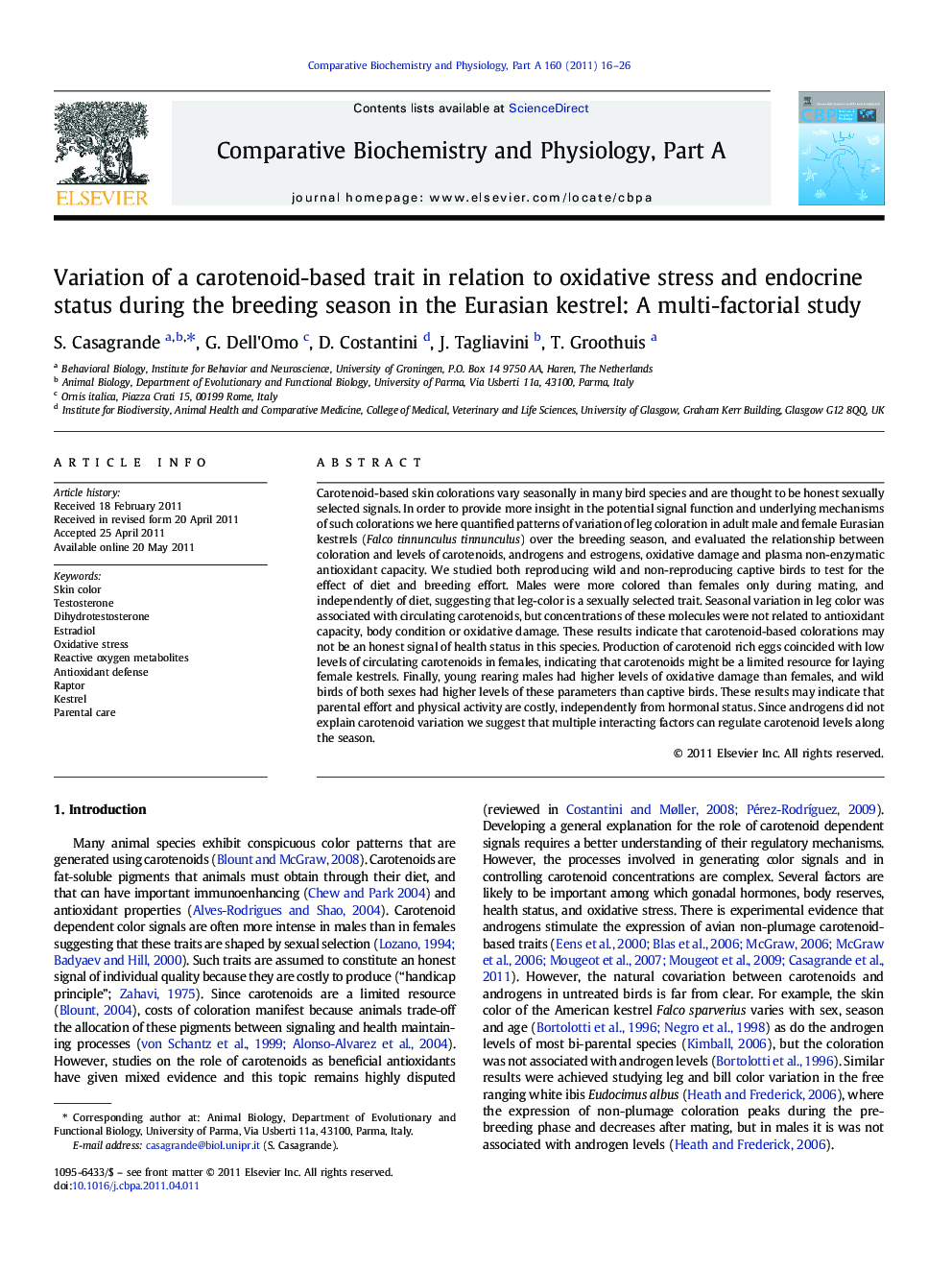| Article ID | Journal | Published Year | Pages | File Type |
|---|---|---|---|---|
| 1973302 | Comparative Biochemistry and Physiology Part A: Molecular & Integrative Physiology | 2011 | 11 Pages |
Abstract
Carotenoid-based skin colorations vary seasonally in many bird species and are thought to be honest sexually selected signals. In order to provide more insight in the potential signal function and underlying mechanisms of such colorations we here quantified patterns of variation of leg coloration in adult male and female Eurasian kestrels (Falco tinnunculus tinnunculus) over the breeding season, and evaluated the relationship between coloration and levels of carotenoids, androgens and estrogens, oxidative damage and plasma non-enzymatic antioxidant capacity. We studied both reproducing wild and non-reproducing captive birds to test for the effect of diet and breeding effort. Males were more colored than females only during mating, and independently of diet, suggesting that leg-color is a sexually selected trait. Seasonal variation in leg color was associated with circulating carotenoids, but concentrations of these molecules were not related to antioxidant capacity, body condition or oxidative damage. These results indicate that carotenoid-based colorations may not be an honest signal of health status in this species. Production of carotenoid rich eggs coincided with low levels of circulating carotenoids in females, indicating that carotenoids might be a limited resource for laying female kestrels. Finally, young rearing males had higher levels of oxidative damage than females, and wild birds of both sexes had higher levels of these parameters than captive birds. These results may indicate that parental effort and physical activity are costly, independently from hormonal status. Since androgens did not explain carotenoid variation we suggest that multiple interacting factors can regulate carotenoid levels along the season.
Keywords
Related Topics
Life Sciences
Biochemistry, Genetics and Molecular Biology
Biochemistry
Authors
S. Casagrande, G. Dell'Omo, D. Costantini, J. Tagliavini, T. Groothuis,
